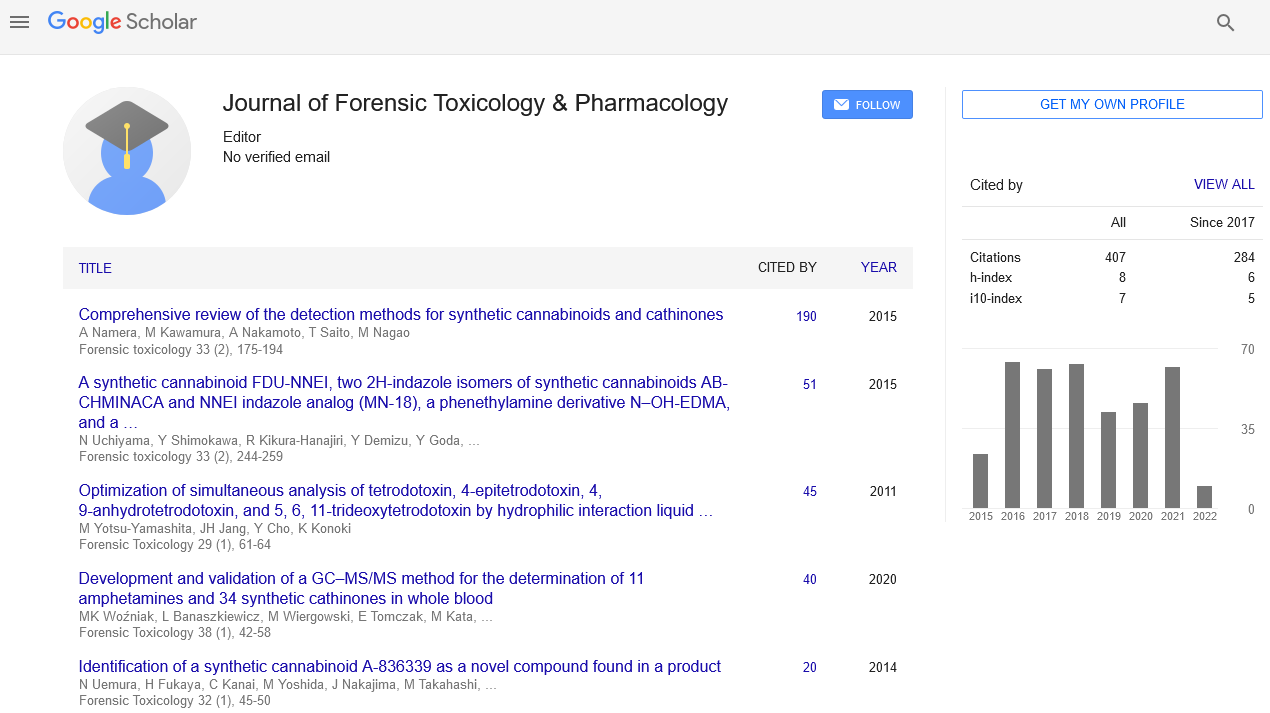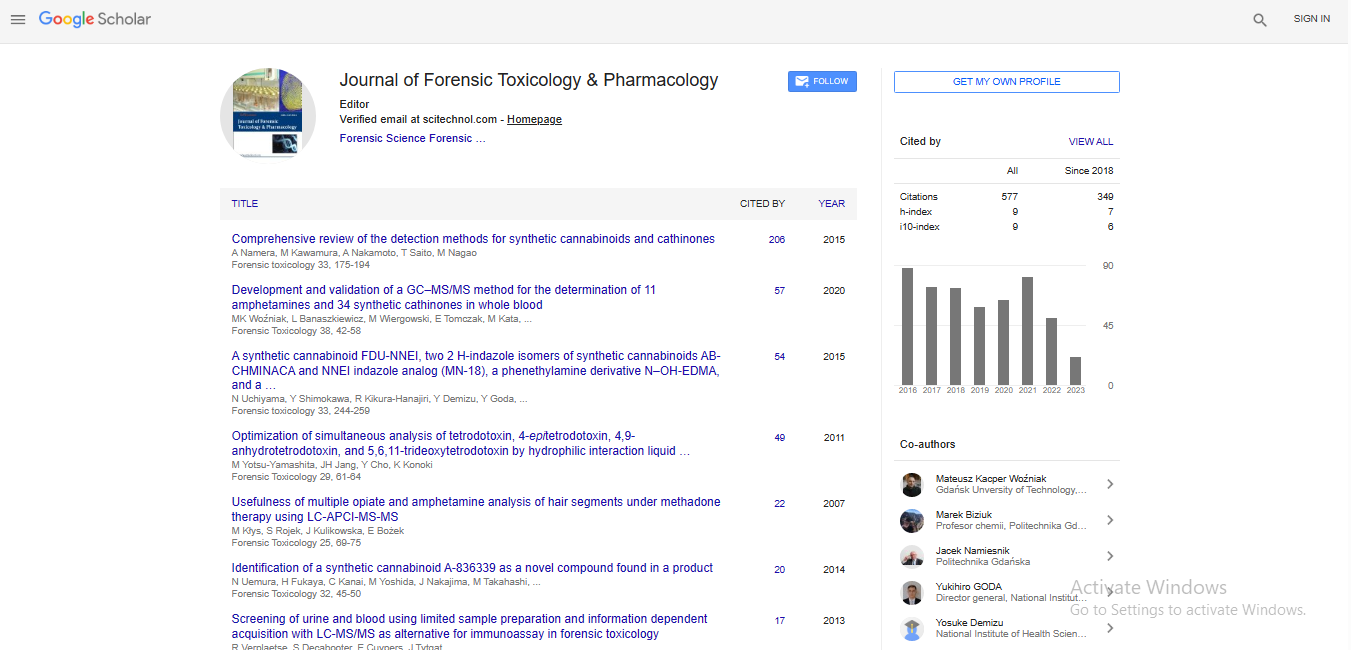Using biomarker identification to detect the early stages of coronary artery disease in asymptomatic population of law enforcement officers in the United States
Jonathan Sheinberg
Baylor Scott and White, USA
: J Forensic Toxicol Pharmacol
Abstract
There is no question; the number one killer of US Law Enforcement Officers (LEOs) is coronary artery disease (CAD). For decades, it has been well known that police officers suffer myocardial infarction and cardiovascular (CV) death at a much higher rate than ther civilian counterparts. John Violant et al1 have previuosly published data revealing that the life expectancy of a LEO is more than 20 years shorter than that of the general population. In fact, all cause mortlaity is statisically higher in LEOs at every age. Between the ages of 55 and 59 the cardiovascular mortality of a civilian is 1.9% while for a police officer it is 59%. Because of the tremendous increase in CV mortality, it is imperative that CAD be identified early so that pharmacological and lifetstyle modifications can be implmented to reduced the associated morbidity and mortality. To this extent, 1500 LEOs in central Texas were evaluated for sub-clinical CAD by meauring the extent of coronary artery calcification and the presence of elevated of markers of coronary inflammation (elevated lipoprotein associated phospholipase A2). Analysis of the studied cohort identified stastically signifacant differences in these biomarkers with the population of LEOs when compared to their civilian counterparts. These differences were seen in officers as young as 24 years of age. By detecting the early and pre-clincal markers of CAD, interventions can be suceesfuly made that can reduce the development of overt heart disease and keep police officers alive, healthy and on the job.
Biography
E-mail: jsheinberg@yahoo.com
 Spanish
Spanish  Chinese
Chinese  Russian
Russian  German
German  French
French  Japanese
Japanese  Portuguese
Portuguese  Hindi
Hindi 
